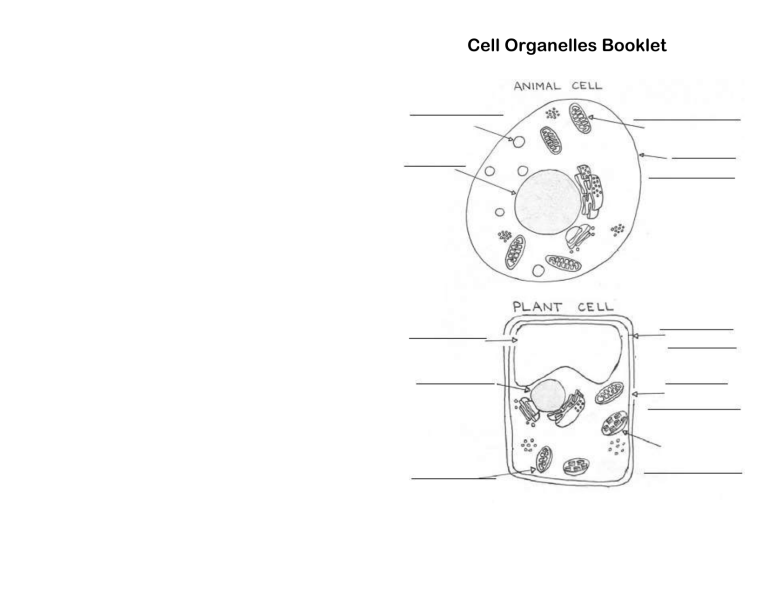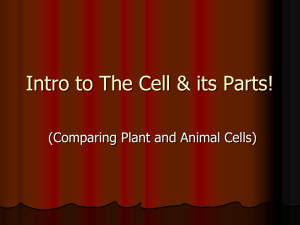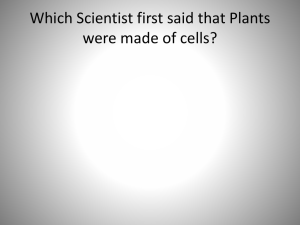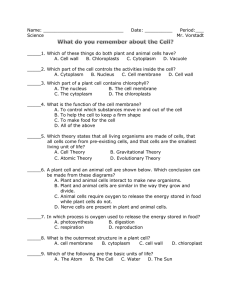
Cell Organelles Booklet
Pg 3
Pg 4
Stop to think:
3. Why is the nucleus an imporant part of most cells?
___________________________________________________________
___________________________________________________________
___________________________________________________________
4. What types of organisms do not contain a nucleus?
___________________________________________________________
___________________________________________________________
5. What is an organelle?
___________________________________________________________
___________________________________________________________
6. What are some things organelles do for the cell?
___________________________________________________________
___________________________________________________________
___________________________________________________________
7. What is the mitochondria?
___________________________________________________________
___________________________________________________________
8. What do mitochondria use to produce energy for a cell?
___________________________________________________________
___________________________________________________________
Pg 5
A plant cell’s structure is a little
different than an animal cell’s
structure. In addition to the cell
membrane it has a cell wall.
The cell wall provides additional
support and stability to a plant
cell.
Green plants also have
organelles called chloroplasts.
Chloroplasts absorb light and
use it along with water and
carbon dioxide to perform
photosynthesis.
Photosynthesis provides the sugars for the cell. The cell uses
these sugars for cellular respiration. There are some protists such
as algae that also have chloroplasts and photosynthesize. Plant
cells, like animal cells have mitochondria that use oxygen and the
nutrients from photosynthesis to produce energy.
9. Why do plants have a cell wall in addition to a cell membrane?
___________________________________________________________
___________________________________________________________
10. What do chloroplasts use to produce nutrients for plant cells
and some protist cells?
___________________________________________________________
___________________________________________________________
Pg 2
A Typical Cell:
As scientists continued to study cells, they noticed structures
inside the cells. From observing many kinds of cells in thousands
of organisms, biologists discovered that some structures are found
in nearly all cells. These structures are so common that they are
usually include in all models or drawings of a “typical cell”
The most common structure of cells is the cell membrane. The
membrane separates the cell from its environment. Every kind of
cell, whether a bacterium, or a cell from a plant or animal, has a
cell membrane. In our lesson modeling the cell membrane we
learned that the cell membrane acts as a barrier to control what
enters or leaves the cell. Somehow, everything that enters or
leaves the cell must cross this membrane
The material enclosed by the
cell membrane is called
cytoplasm, which contains
the “cell material.” In the
cytoplasm the cell breaks
down nutrients from food and
builds new substances it
needs to grow and carry out
its other functions.
Stop and Think
1. How did scientists discover the common structure of cells?
__________________________________________________
__________________________________________________
2. What is the role of the cytoplasm in the cell?
__________________________________________________
__________________________________________________
__________________________________________________
____________________________________________
Pg 1
Pg 6
Two scientists – Schleiden and Schwann – discovered that all
living organisms are made up of one or more cells. This includes
plants, animals and microbes like bacteria. The microbes that
`
cause
infectious disease are often organisms made up of just one
cell. Most organisms you can see without a microscope are made
up of many cells.
The cells shown here are from human skin. What do you see
inside the cell?
____________________________________________________
____________________________________________________
11. Why do the tissues, organs and organ systems of animals
differ from those of plants?
____________________________________________________
____________________________________________________








